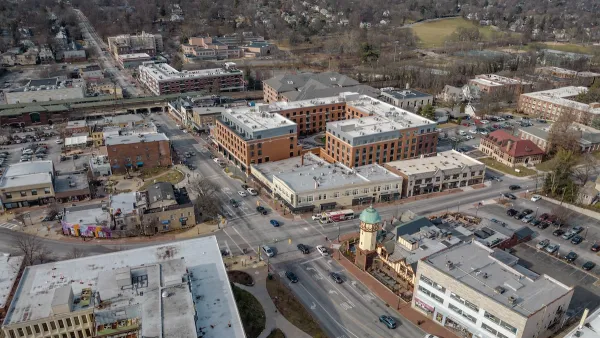In this wide-ranging post for The Atlantic, the NRDC's Kaid Benfield explores some of the major trends playing out in urban and suburban America, and how the suburbs are less and less the dominant urban form in the market.
The suburbs and the assumptions that enabled them to grow are collapsing, according to Benfield.
"[I]n between, say, 1960 and 2000, many central cities were in severe decline, due to "white flight" and all sorts of perceived urban problems. But for some tragic exceptions like Detroit, that decline now has either slowed dramatically or reversed. In D.C., for example, the central city is growing again after 50 years of decline and ironically, a new concern of some is that "white flight" is now to the city, not away from it. New York, Philadelphia, Indianapolis, Houston, Austin, and San Antonio also grew. This is where the change is.
In addition, the distinction between "central city" and "suburb" is simply not what it once was. Inner-ring suburbs now are part of the central city in every way other than the arbitrary jurisdictional lines that mean little economically or environmentally. In his blog West North, my friend Payton Chung points out that the supposed "suburban" district of Friendship Heights Village, in Maryland but adjacent to the D.C. city limits, is 'the single most densely populated place in the entire country, with 79,556 residents per square mile. Even Manhattan only clocks in at 69,468 per square mile.'"
FULL STORY: How History Killed the Suburb

Analysis: Cybertruck Fatality Rate Far Exceeds That of Ford Pinto
The Tesla Cybertruck was recalled seven times last year.

National Parks Layoffs Will Cause Communities to Lose Billions
Thousands of essential park workers were laid off this week, just before the busy spring break season.

Retro-silient?: America’s First “Eco-burb,” The Woodlands Turns 50
A master-planned community north of Houston offers lessons on green infrastructure and resilient design, but falls short of its founder’s lofty affordability and walkability goals.

Test News Post 1
This is a summary

Analysis: Cybertruck Fatality Rate Far Exceeds That of Ford Pinto
The Tesla Cybertruck was recalled seven times last year.

Test News Headline 46
Test for the image on the front page.
Urban Design for Planners 1: Software Tools
This six-course series explores essential urban design concepts using open source software and equips planners with the tools they need to participate fully in the urban design process.
Planning for Universal Design
Learn the tools for implementing Universal Design in planning regulations.
EMC Planning Group, Inc.
Planetizen
Planetizen
Mpact (formerly Rail~Volution)
Great Falls Development Authority, Inc.
HUDs Office of Policy Development and Research
NYU Wagner Graduate School of Public Service



























